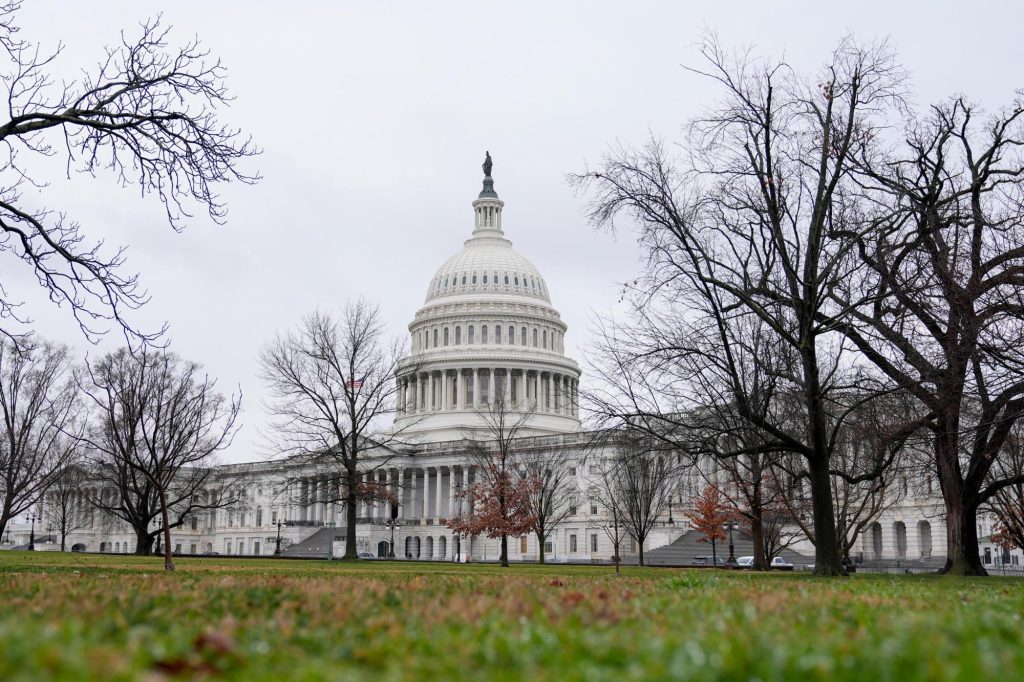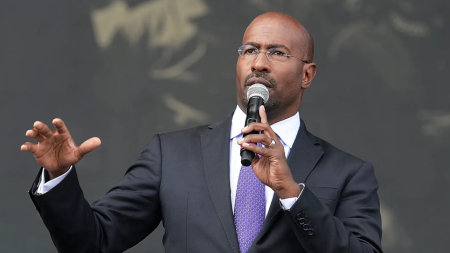By KEVIN FREKING (Associated Press)
In Washington, the Senate has agreed to a $460 billion package of spending bills on Friday in order to prevent a shutdown of many crucial federal agencies by the midnight deadline. This decision takes lawmakers halfway toward completing their appropriations work for the 2024 budget year.
The package contains six yearly spending bills, and it has already been passed by the House. It is now going to President Joe Biden to be signed into law. The White House mentioned that he will do so Saturday, and that “agencies will not shut down and may continue their normal operations.”
At the same time, lawmakers are discussing a second package of six bills, including defense, to ensure that all federal agencies are fully funded by a March 22 deadline.
Senate Majority Leader Chuck Schumer, D-N.Y., said, “To folks who worry that divided government means nothing ever gets done, this bipartisan package says otherwise.”
He mentioned that passing the bill would enable the hiring of more air traffic controllers and rail safety inspectors, provide federal firefighters with a raise, and increase support for homeless veterans, among other things.
The Senate approved the bill with a vote of 75-22. The Senate worked hard to reach a final vote just hours before the midnight deadline for the first set of appropriations bills. Lawmakers wanted to vote on several amendments and express their views on the bill and other priorities during the floor debate. It was unclear at midday whether senators would be able to avoid a brief shutdown, although eventual passage was never really in doubt.
“I would urge my colleagues to stop playing with fire here,” said Sen. Susan Collins, the top-ranking Republican member of the Senate Appropriations Committee. “It would be irresponsible for us not to clear these bills and do the fundamental job that we have of funding government. What is more important?”
The votes this week come more than five months into the current fiscal year after congressional leaders used a series of stopgap bills to keep federal agencies funded for a few more weeks or months at a time while they struggled to reach agreement on full-year spending.
Ultimately, the total discretionary spending set by Congress is expected to reach about $1.66 trillion for the entire budget year ending on Sept. 30.
Republicans managed to maintain non-defense spending at a relatively consistent level compared to the previous year. Supporters see this as progress in a time when annual federal deficits exceeding $1 trillion have become the norm. However, many Republican lawmakers were seeking much larger cuts and more policy wins.
The House Freedom Caucus, which includes many of the GOP’s most conservative members, encouraged Republicans to vote against the first spending package and also the second one that is still being negotiated.
Democrats successfully fought off most of the policy add-ons that Republicans wanted to include in the package. For example, they prevented an attempt to block new rules that expand access to the abortion pill mifepristone. They were also able to fully fund a nutrition program for low-income women, infants, and children, providing about $7 billion for what is known as the WIC program. This amount is a $1 billion increase from the previous year.
Republicans achieved some policy victories. For example, one rule will stop oil sales from the Strategic Petroleum Reserve to China. Another directive forbids the Justice Department from investigating parents who speak freely at local school board meetings.
Another rule strengthens gun rights for certain veterans, despite critics saying it could make it easier for those with serious mental health conditions like dementia to get a firearm.
Sen. Patty Murray, the Democratic chair of the Senate Appropriations Committee, said, “This isn’t the plan I would have written alone, but I am proud that we have protected crucial funding that the American people depend on in their daily lives.”
Sen. Rand Paul, R-Ky., pointed out a problem with the bill, saying there was too much compromise, leading to excessive spending.
Paul explained, “Many people misunderstand this. They think there is no cooperation in Washington, but the opposite is true. Compromise happens every day on every spending bill.”
He added, “It’s a compromise between big-government Democrats and big-government Republicans.”
However, with a divided Congress and a Democratic-led White House, any bill that doesn’t have support from members of both political parties has no chance of passing.
The bill also contains over 6,600 projects requested by individual lawmakers totaling about $12.7 billion. Some Republican members criticized the projects, though members from both parties largely participated in requesting them for their states and congressional districts. Paul described the spending as “a way to ease in other dollars, because you get people to support the whole package by giving them a little bit of funding for their town, or for their donors.”
An attempt by Sen. Rick Scott, R-Fla, to remove the projects only received 32 votes in favor, with 64 against. Murray stated that Scott’s effort would overturn “all the hard work, all the input we asked everyone to provide us about projects that would help their constituents.”
Even though lawmakers find themselves passing spending bills five months into the fiscal year, Republicans are presenting the process as improved because they broke the pattern of passing all the spending bills in one large package that lawmakers have little time to review before voting or risk a government shutdown. However, others said that dividing the funding into two pieces of legislation was hardly a breakthrough.
The first package currently heading to Biden’s desk covers the departments of Justice, Veterans Affairs, Agriculture, Interior and Transportation, among others.









